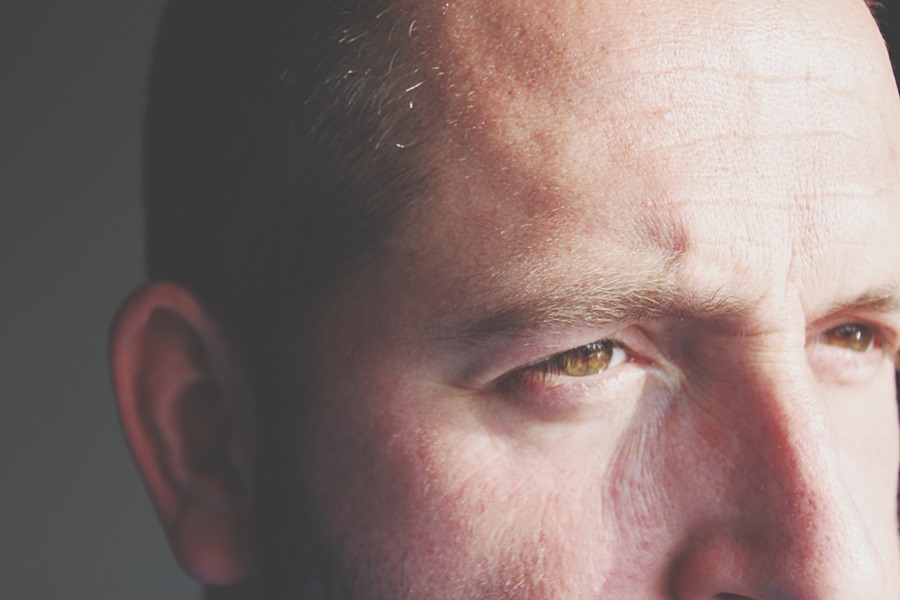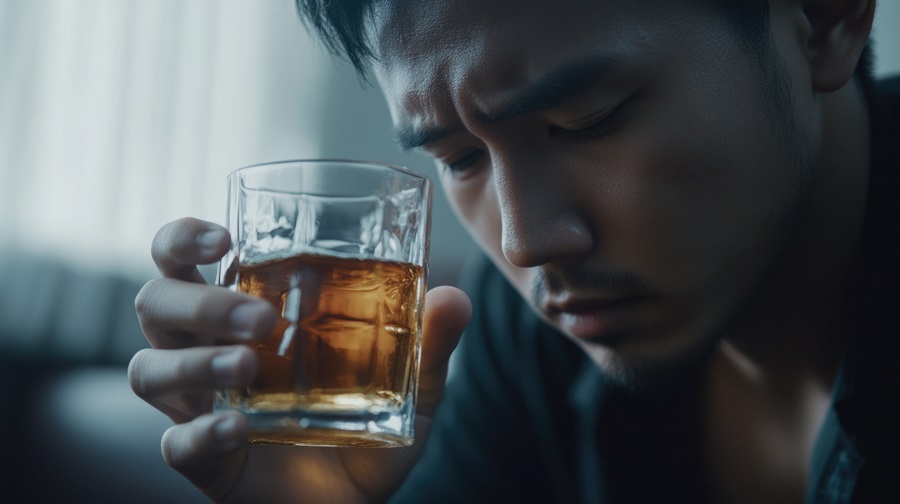When trying to identify opioid abuse, physical signs are a common place to start since there are specific opioid intoxication symptoms you can look for. One of those physical characteristics is how opioids affect the eyes, often called “opioid eyes.”
What are opioid eyes, and what does it mean if you or a loved one is showing these ocular symptoms of opioid use? Keep reading as we review all the details and provide information about when opioid addiction treatment may be a good idea.
Why Eyes Reveal Opioid Use
When you take opioids, such as prescription painkillers or illicit drugs like heroin, they act as a central nervous system (CNS) depressant. CNS depressant drugs slow down mental and bodily functions, such as your perception of pain and how the muscles function.
The main function of these drugs is attaching to the opioid receptors in the brain responsible for sending pain signals and slowing/disrupting their function, reducing the pain someone experiences. That’s why they’re a popular form of prescription painkiller.
On top of disrupting pain signals, the CNS depressant effects will also slow down muscle function, including how the muscles in the eyes regulate pupil size.
Having the muscles slow down and relax leads to the pupils constricting, where they’ll start to look like small pinpoints. Studies show that pinpoint pupils from opioids typically appear within 15-60 minutes of taking them and last for about 3-5 hours.
Additionally, the depressant effects of opioids can lead to other physical symptoms in the eyes, such as looking bloodshot or glassy. This often happens because they slow down tear production, which makes the eyes get dry and results in a bloodshot or glassy appearance.
Research also shows that opioids can cause a histamine release, which is one of the body’s immune responses to taking drugs. A histamine release can dilate the blood vessels (increasing blood flow) and make the eyes look bloodshot or irritated.
Pinpoint Pupils – The Classic Sign of Opioid Use
Changes in the pupils when high on opioids are one of the clear indicators of opioid abuse.
When someone is high on opioids, the pupils will constrict and start to look like small pinpoints. Research from the Journal of Anesthesiology found that taking opioids reduced pupils, on average, to about 2-3 mm in diameter.
Pinpoint pupils are known as one of the classic opioid intoxication symptoms because opioids are one of the main drugs that may be used to get high that cause the pupils to constrict.
Several other drugs, especially stimulants like cocaine or methamphetamine, can cause the opposite effect, where the pupils dilate (get bigger) after use.
Therefore, eye changes from drugs can indicate what type of substance an individual may have used, such as a depressant drug vs. a stimulant. Then, it makes it easier to look for other symptoms of addiction that are common for that type of substance.
Other Eye-Related Symptoms of Opioid Use
Some of the other eye-related opioid intoxication symptoms you can look for include:
- Bloodshot or glassy eyes: As mentioned earlier, this can happen because opioid abuse causes dry eyes or triggers a histamine release as the body tries to process a new substance entering its system.
- Drooping eyelids: The muscle-relaxing effects of opioids can also cause the eyelids to droop since the muscles around the eyes won’t have as much capacity to hold them up.
- Reduced reaction to light: When the pupils constrict, they won’t let as much light in. Therefore, someone who has opioid eyes might react less to bright lights. This can be dangerous in some cases if bright lights are shining to indicate a warning and someone high on opioids doesn’t notice it in time.
- Difficulty focusing or appearing drowsy: The depressant effects of opioids will slow down several mental functions, including the ability to focus. They might also make someone feel tired and start to look drowsy.
Physical and Behavioral Signs Beyond the Eyes
Beyond just the effects in the eyes, there are several other signs you can look for to determine if someone is high on opioids or struggling with opioid abuse. Those include:
- Slurred speech
- Itching
- Nausea
- Constipation
- Drowsiness or suddenly falling asleep
- Slowed movements
- Reduced coordination
- Mood swings
- Neglecting responsibilities
- Social isolation
- Track marks (needle marks) in common injection sites, such as the crooks of the elbows
When you or someone you care about is regularly displaying any of these signs, it may be time to seek addiction treatment. The right rehab program can make a difference and give you strategies to recover and maintain ongoing sobriety. We can help at United Recovery Project if you’re looking for options.
Long-Term Effects of Opioid Use on Appearance and Health
Long-term opioid abuse can cause more than just short-term side effects like pinpoint pupils. It can also lead to long-term health consequences in the eyes, such as vision impairment, vision loss, nerve damage, and glaucoma.
A study by JAMA Ophthalmology found a significant link between long-term opioid abuse and vision loss, along with several other negative effects on the eyes.
Ongoing opioid addiction also has many other health risks. Those include an increased risk of overdose, respiratory conditions, mental health disorders, and wasting syndrome (causing significant weight loss and fatigue).
All of these risk factors are why early intervention with opioid addiction is important to make a full recovery and prevent health issues that lead to long-term consequences.
Withdrawal Symptoms When the Drug Wears Off
When you stop opioids after using them for an extended time, you’ll likely experience some physical and mental withdrawal symptoms as your body is readjusting. Common opioid withdrawal signs include:
- The pupils becoming enlarged (dilated) as the muscles in your eyes are readjusting
- Anxiety or paranoia
- Restlessness
- Sweating
- Nausea
- Insomnia
- Irritability
- Muscle aches
Some people may also experience rare but serious withdrawal symptoms like hallucinations or seizures. The potential severity and discomfort involved during withdrawal are why it’s important to seek a medical detox at a treatment center to ensure you stay as safe and comfortable as possible during the process.
When to Seek Help
If you notice that you or a loved one is showing signs of opioid addiction, such as physical changes in the eyes, trying to stop taking opioids and not being able to, or experiencing negative consequences because of opioid abuse, those are all signs that seeking addiction treatment is a good idea.
Contacting a rehab center is a great place to start. Treatment professionals will be able to provide a diagnosis and recommend rehab options that are best for your needs.
Rehab often starts with a medical detox. Then, it may be followed up with a longer-term inpatient or outpatient treatment program that provides resources for therapy, making lifestyle changes, and creating strategies to maintain sobriety long-term.
How United Recovery Project Can Help
When you or a loved one is frequently showing signs of opioid intoxication in the eyes or other signs of addiction, we can help at United Recovery Project.
We provide evidence-based drug and alcohol treatment options that can be tailored to your needs. That includes medical detox, inpatient rehab, and outpatient rehab.
You don’t have to go through opioid addiction on your own. Contact us today to sign up for a confidential consultation and learn more about how we can help achieve lasting recovery.
References
- Ram, Jagat, et al. “Illicit Drugs: Effects on Eyes.” Indian Journal of Medical Research, vol. 150, no. 3, 2019, p. 228, doi:10.4103/ijmr.ijmr_1210_17. https://pmc.ncbi.nlm.nih.gov/articles/PMC6886135/
- “Histamine Release – an Overview | ScienceDirect Topics.” https://www.sciencedirect.com/topics/immunology-and-microbiology/histamine-release
- Rollins, Mark D., et al. “Pupillary Effects of High-Dose Opioid Quantified with Infrared Pupillometry.” Anesthesiology, vol. 121, no. 5, Nov. 2014, pp. 1037–1044, doi:10.1097/aln.0000000000000384. https://pubmed.ncbi.nlm.nih.gov/25068603/
- Luong, Preston M., et al. “Vision Loss Associated with the Opioid Epidemic.” JAMA Ophthalmology, vol. 135, no. 12, 1 Dec. 2017, p. 1449, doi:10.1001/jamaophthalmol.2017.4868. https://jamanetwork.com/journals/jamaophthalmology/fullarticle/2663384
- S. Department of Labor. “Risk Factors for Opioid Misuse, Addiction, and Overdose | U.S. Department of Labor.” https://www.dol.gov/agencies/owcp/opioids/riskfactors






